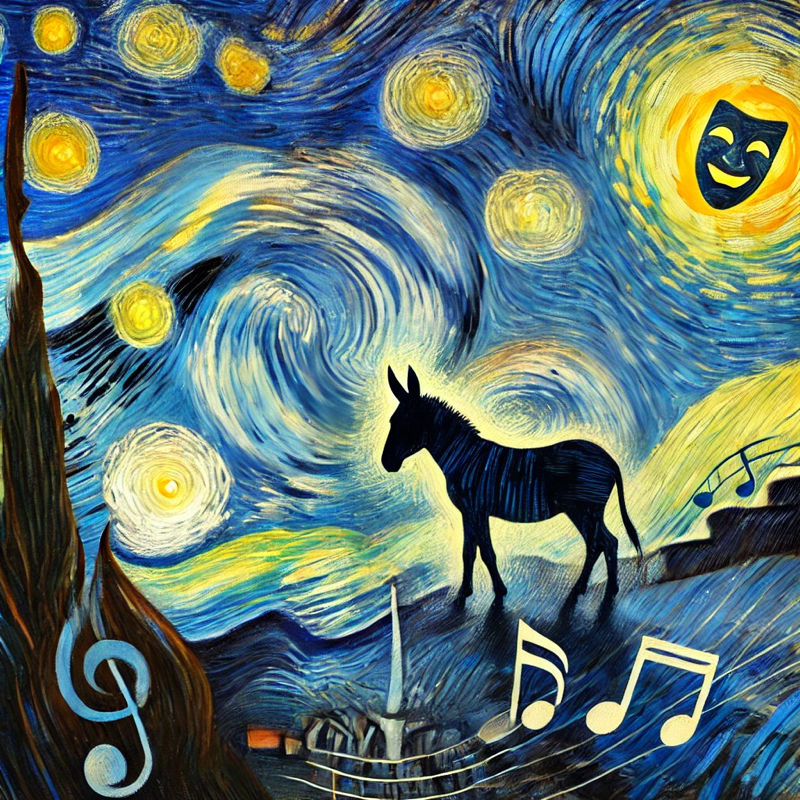The Burden of Misconception: How the Donkey’s Image Mirrors Social Bias
The donkey has carried humanity’s burdens for centuries, yet it remains one of the most misunderstood animals. Labeled as stubborn and unintelligent, it mirrors how society marginalizes certain groups. This post explores these misconceptions, their cultural roots, and the lessons we can learn.

The Donkey: A Misunderstood Companion
The donkey has been humanity’s loyal companion for thousands of years. A symbol of patience and resilience, it has carried our burdens, plowed our fields, and provided transport across harsh terrains. Yet, despite its invaluable contributions, the donkey is one of the most stigmatized animals in human history. From folklore to modern idioms, the donkey has been unfairly labeled as stubborn, unintelligent, and lowly. These misconceptions not only diminish the donkey’s true nature but also mirror the way humans impose unjust stigmas on each other.
How Culture Reinforces Misinformation
Throughout history, language, literature, and social norms have shaped negative perceptions of donkeys. These stereotypes are deeply embedded in different cultures, reinforcing unfair assumptions about the animal’s worth and abilities.
1. The Donkey as a Symbol of Foolishness
In many languages, being called a “donkey” is an insult. The phrase “dumb as a donkey” suggests that the animal lacks intelligence, when in reality, donkeys are highly intelligent creatures with remarkable problem-solving abilities. They are not mindlessly obedient like horses but instead assess situations for safety before acting—a trait mistaken for stubbornness.
2. The Donkey as a Lowly Beast of Burden
Unlike the horse, which is often associated with nobility, speed, and power, the donkey is linked to poverty and hardship. In literature and religious texts, donkeys frequently appear as the mounts of the humble, while kings and warriors ride horses. This association has led to the idea that donkeys are lesser animals, undeserving of admiration or respect.
3. Overworked and Undervalued
In many countries, donkeys are still used as working animals, often facing mistreatment and neglect. Their reputation as tough and enduring creatures results in their suffering being overlooked. Much like marginalized groups in society, donkeys are expected to bear burdens without complaint, reinforcing the idea that their well-being is unimportant.
4. Mockery in Pop Culture
From cartoons to literature, donkeys are often depicted as comedic sidekicks—loud, clumsy, and silly. This trivialization further cements their reputation as ridiculous or laughable creatures, much like how certain social groups are caricatured in media, reducing their complexity to a stereotype.
Parallels with Social Stigma
The way society perceives and mistreats donkeys is not unlike the way it marginalizes certain groups of people. Just as donkeys are dismissed as unintelligent and lesser, so too are individuals facing discrimination due to race, gender, mental health, or socioeconomic status.
- Judged Without Understanding – Like the donkey, people facing stigma are often judged based on appearances or assumptions rather than reality. Intelligence, worth, and ability are frequently measured by societal standards that fail to account for unique strengths and experiences.
- Burdened Without Recognition – Many individuals are expected to endure hardship quietly, just as donkeys are expected to carry heavy loads without protest. The struggles of marginalized groups are often invisible or ignored.
- Reduced to a Label – Just as donkeys are seen only as beasts of burden, stigmatized individuals are often reduced to a single trait, whether it be a mental health diagnosis, a past mistake, or a social identity. This dehumanization strips them of their full complexity and value.
Lessons We Can Learn
The way we treat and perceive donkeys offers valuable lessons about how we view and treat each other. Here are some key takeaways:
- Intelligence is diverse – Just because someone (or something) doesn’t conform to traditional expectations of intelligence doesn’t mean they lack it. Donkeys are highly intelligent in their own way, just as people possess different types of intelligence.
- Strength should not justify exploitation – Just because someone can endure hardship doesn’t mean they should have to. Recognizing resilience should lead to respect, not further mistreatment.
- Labels are misleading – Calling someone (or an animal) “dumb” or “stubborn” dismisses their real qualities and contributions. It’s essential to look beyond stereotypes.
- Compassion should extend to all – Whether human or animal, everyone deserves dignity and kindness. Just as we should advocate for fair treatment of people, we should also extend empathy to animals like donkeys.
Conclusion
The donkey’s long history of unfair treatment serves as a mirror to society’s broader issues with bias and discrimination. We often fail to see the value in what is humble, quiet, or different from our expectations. But just as the donkey is not the dull, stubborn creature it is often made out to be, many people are far more than the stereotypes imposed upon them. Recognizing and challenging these misconceptions—whether about animals or people—can lead to a more just and compassionate world.
